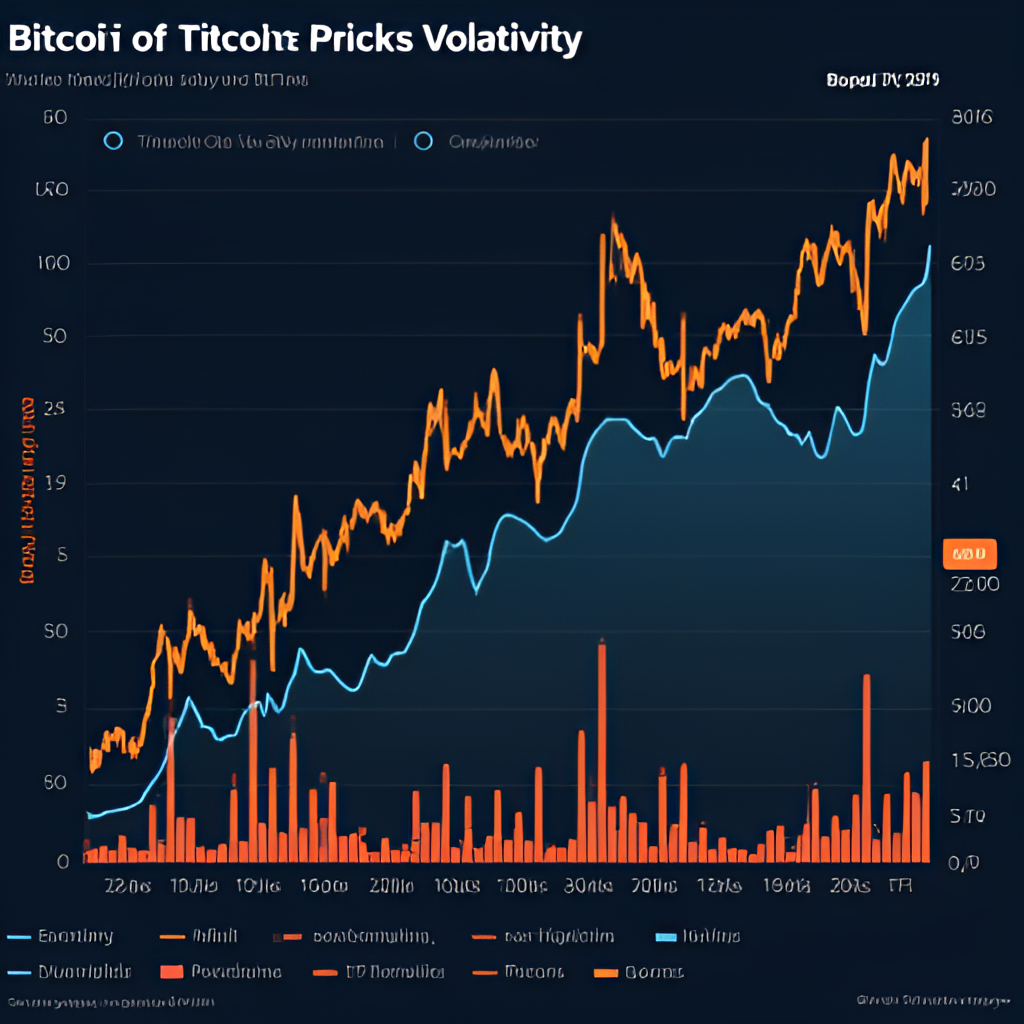Understanding Bitcoin: A Beginner’s Guide to the Digital Revolution
- Introduction to the World of Bitcoin
- What Exactly is Bitcoin?
- How Does Bitcoin Technology Work?
- Bitcoin Mining: The Engine of the Network
- Choosing and Using a Bitcoin Wallet
- Investing in Bitcoin: What You Need to Know
- Bitcoin Price History and Volatility
- The Future of Bitcoin: Possibilities and Challenges
- Conclusion: Navigating the Bitcoin Landscape
Understanding Bitcoin can feel like trying to grasp smoke – it’s digital, decentralized, and unlike traditional money we’re used to. My own journey into the world of Bitcoin started with a healthy dose of skepticism, fueled by news headlines about price swings and complex technology. But the more I learned, the more I realized the revolutionary potential of this digital currency. In this article, we’ll dive deep into Understanding Bitcoin, exploring what it is, how it works, and why it has captured the world’s attention. Let’s unravel the basics of this fascinating digital asset and its underlying technology.
What Exactly is Bitcoin?
At its core, Bitcoin (BTC) is a decentralized digital currency. Unlike fiat currencies like the US dollar or Euro, it isn’t controlled by a central bank or single administrator. It operates on a peer-to-peer network, allowing individuals to send and receive payments directly without intermediaries like banks.
The concept was introduced in 2008 by an anonymous entity known only as Satoshi Nakamoto, who published a white paper outlining a “Peer-to-Peer Electronic Cash System.” The network officially launched in January 2009. Bitcoin was designed to be a secure, transparent, and immutable form of money.
Think of it this way: traditional banking requires trust in institutions to hold and manage your money. With Bitcoin, that trust is replaced by cryptographic proof and a distributed ledger. This ledger, known as the blockchain, records every Bitcoin transaction ever made, and it’s shared across a vast network of computers (nodes).
How Does Bitcoin Technology Work?
The magic behind Bitcoin lies in its underlying technology: the blockchain. Imagine a digital, public ledger that is constantly updated and verified by everyone participating in the network. Every transaction is added to this ledger in “blocks,” which are then linked together chronologically using complex cryptographic rules. This creates a chain of blocks – hence, blockchain.
When you send Bitcoin, the transaction is broadcast to the network. Computers on the network, called miners, validate this transaction. Once validated, the transaction is bundled into a block with other recent transactions. This block is then added to the existing blockchain through a process called mining.
What makes the blockchain so secure? Each new block contains a cryptographic hash of the previous block. Changing any information in a past block would change its hash, which would then invalidate the hash in the *next* block, and so on. This makes the blockchain incredibly resistant to tampering.
Another key element is cryptography. Bitcoin uses public and private keys for transactions. Your public key is like your bank account number, visible to anyone. Your private key is like your password – you use it to digitally sign transactions, proving that you own the Bitcoin you’re sending.
Bitcoin Mining: The Engine of the Network
Bitcoin mining is the process that verifies transactions and adds them to the blockchain. It’s also how new bitcoins are introduced into circulation. Miners use powerful computers to solve complex mathematical puzzles. The first miner to solve the puzzle for a new block gets to add that block to the blockchain and is rewarded with a certain amount of newly minted Bitcoin, plus transaction fees.
This process is called “proof-of-work” (PoW). It requires significant computational power and energy, which makes it difficult and expensive for any single entity to gain control of the network (a theoretical “51% attack”).
The reward for mining a block halves approximately every four years in an event called the “halving.” This scarcity mechanism is designed to control the supply of new bitcoins and mirrors the extraction of finite resources like gold. The total supply of Bitcoin is capped at 21 million coins.
I remember when I first tried to understand mining – it seemed like some sort of digital gold rush. While it *can* be lucrative, the increasing difficulty of the puzzles and the cost of specialized hardware (ASICs) mean it’s primarily done by large mining operations now.
Choosing and Using a Bitcoin Wallet
If you want to hold, send, or receive Bitcoin, you need a Bitcoin wallet. Contrary to the name, a Bitcoin wallet doesn’t actually store your bitcoins; it stores your private keys, which are necessary to access and manage your funds on the blockchain.
There are several types of Bitcoin wallets:
- Software Wallets (Hot Wallets): These are applications you install on your computer or mobile device. They are convenient for everyday transactions but are connected to the internet, making them potentially more vulnerable to online threats like malware. Examples include mobile apps and desktop programs.
- Hardware Wallets (Cold Wallets): These are physical devices that store your private keys offline. They resemble USB drives and are considered the most secure option for storing larger amounts of Bitcoin because they are not connected to the internet. You typically connect them to a computer or phone when you need to make a transaction. Ledger and Trezor are well-known examples.
- Paper Wallets: These involve printing your public and private keys on paper. While offline, they are now considered unreliable and largely obsolete due to the risk of damage, loss, or errors.
Choosing the right wallet depends on your needs and how much Bitcoin you plan to hold. For small amounts or frequent transactions, a software wallet might be fine. For larger holdings, a hardware wallet offers significantly better security.

This image is a fictional image generated by GlobalTrendHub.
Investing in Bitcoin: What You Need to Know
Many people are interested in Bitcoin as an investment asset rather than just a payment method. Investing in Bitcoin involves buying BTC on cryptocurrency exchanges. These platforms allow you to trade fiat currency (like USD) or other cryptocurrencies for Bitcoin.
When considering investing in Bitcoin, it’s crucial to understand the risks. Bitcoin is known for its high volatility, meaning its price can change dramatically and quickly. Its value is primarily driven by supply, demand, and market sentiment, not by a central bank or physical asset.
Here are a few tips if you’re thinking about investing in Bitcoin:
- Do Your Own Research (DYOR): Understand the technology, market, and risks involved.
- Understand Your Risk Tolerance: Only invest what you can afford to lose. Bitcoin is a high-risk asset.
- Start Small: You don’t need to buy a whole Bitcoin. Many exchanges allow you to buy fractions of a coin.
- Choose a Reputable Exchange: Look for exchanges with strong security measures and a good track record.
- Secure Your Investment: Use strong passwords, enable two-factor authentication, and consider moving larger amounts to a hardware wallet.
- Diversify: Don’t put all your investment eggs in one basket.
My personal approach has always been to start small and learn as I go. The cryptocurrency market is complex, and making informed decisions is key.
Bitcoin Price History and Volatility
Bitcoin’s price history is a rollercoaster ride. It started with virtually no value in 2009. The first recorded real-world transaction was in May 2010, when someone famously paid 10,000 BTC for two pizzas (an event now celebrated as “Bitcoin Pizza Day”). Imagine what those pizzas would be worth today!
Early on, the price was fractions of a cent. It hit $1 for the first time in 2011. Since then, it has gone through multiple cycles of massive price increases followed by significant crashes. Major rallies occurred in 2013, 2017, and 2020-2021, pushing the price to new all-time highs.
For example, after hovering around $1,000 for much of 2017, Bitcoin surged to nearly $20,000 by the end of that year, only to crash significantly in 2018. It saw another massive bull run in 2020 and 2021, reaching over $64,000 in April 2021 and topping $64,899 in November 2021. The approval of spot Bitcoin ETFs in the US in January 2024 and the halving in April 2024 were significant recent events impacting the market.
Understanding Bitcoin’s history highlights its volatile nature. It’s not uncommon for the price to fluctuate by thousands of dollars in a single day.

This image is a fictional image generated by GlobalTrendHub.
The Future of Bitcoin: Possibilities and Challenges
What does the future hold for Bitcoin? That’s a question everyone in the space is asking, and opinions vary wildly.
Some see Bitcoin becoming a global reserve asset, a “digital gold” that stores value and hedges against inflation, especially given its fixed supply cap. Others believe it could eventually become a widely accepted medium of exchange for everyday transactions.
However, significant challenges remain. Volatility makes it difficult for widespread use as a currency. Scalability is another issue – the Bitcoin network can only process a limited number of transactions per second compared to traditional payment systems. Environmental concerns about the energy consumption of Bitcoin mining are also frequently raised.
Regulatory uncertainty is another major factor. Governments around the world are still figuring out how to classify and regulate Bitcoin, and policies vary significantly by country.
Despite these challenges, the ecosystem around Bitcoin continues to grow, with ongoing development efforts aimed at improving scalability and efficiency.
Conclusion: Navigating the Bitcoin Landscape
Understanding Bitcoin is an ongoing process, even for those of us who have been involved for a while. It’s more than just a digital currency; it’s a groundbreaking technology built on principles of decentralization and transparency.
From its mysterious origins with Satoshi Nakamoto to its current status as a major global asset, Bitcoin has proven to be incredibly resilient and innovative. While navigating the world of Understanding Bitcoin involves acknowledging its volatility and technical complexity, the potential for reshaping finance and empowering individuals remains compelling.
As someone who’s followed this journey, I believe staying informed and approaching Bitcoin with a balanced perspective – appreciating its potential while respecting its risks – is the best way forward in this rapidly evolving digital frontier.